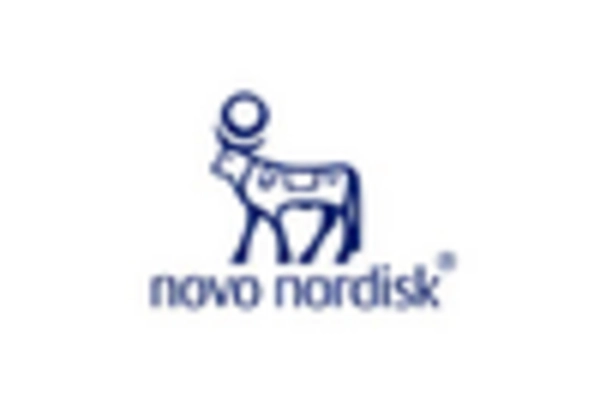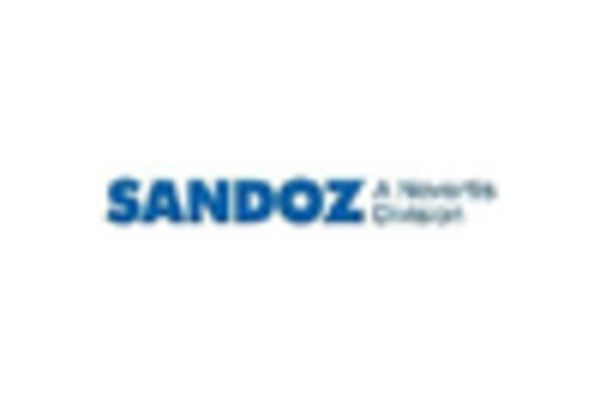The human growth-hormone market is characterized by a dynamic competitive landscape, driven by increasing demand for growth hormone therapies and advancements in biotechnology. Key players such as Pfizer (US), Merck KGaA (DE), and Novo Nordisk (DK) are at the forefront, each adopting distinct strategies to enhance their market presence. Pfizer (US) focuses on innovation through research and development, aiming to expand its product portfolio with novel formulations. Merck KGaA (DE) emphasizes strategic partnerships and collaborations to leverage cutting-edge technologies, while Novo Nordisk (DK) is committed to regional expansion, particularly in emerging markets, to capture a larger share of the growing demand for human growth hormones. Collectively, these strategies contribute to a competitive environment that is increasingly characterized by innovation and strategic alliances.
In terms of business tactics, companies are localizing manufacturing and optimizing supply chains to enhance efficiency and reduce costs. The market structure appears moderately fragmented, with several key players exerting influence over various segments. This fragmentation allows for niche players to thrive, while larger companies leverage their resources to maintain competitive advantages. The collective influence of these key players shapes market dynamics, fostering an environment where innovation and operational efficiency are paramount.
In October 2025, Pfizer (US) announced a significant investment in a new manufacturing facility aimed at increasing production capacity for its growth hormone products. This strategic move is likely to enhance supply chain reliability and meet the rising demand in the GCC region. By bolstering its manufacturing capabilities, Pfizer (US) positions itself to respond swiftly to market needs, thereby reinforcing its competitive edge.
In September 2025, Merck KGaA (DE) entered into a collaboration with a leading biotechnology firm to develop next-generation growth hormone therapies. This partnership is indicative of Merck KGaA's commitment to innovation and reflects a broader trend in the industry towards collaborative research efforts. Such alliances may accelerate the development of advanced therapies, potentially reshaping treatment paradigms in the human growth-hormone market.
In August 2025, Novo Nordisk (DK) launched a new digital platform aimed at enhancing patient engagement and adherence to growth hormone therapies. This initiative underscores the growing importance of digitalization in the healthcare sector, as companies seek to leverage technology to improve patient outcomes. By integrating digital solutions, Novo Nordisk (DK) not only enhances its service offerings but also positions itself as a leader in patient-centric care.
As of November 2025, current competitive trends are increasingly defined by digitalization, sustainability, and the integration of artificial intelligence in product development and patient management. Strategic alliances are shaping the landscape, enabling companies to pool resources and expertise to drive innovation. Looking ahead, competitive differentiation is likely to evolve, with a shift from price-based competition towards a focus on innovation, technology, and supply chain reliability. This transition may redefine market dynamics, compelling companies to invest in advanced technologies and sustainable practices to maintain their competitive positions.

















Leave a Comment